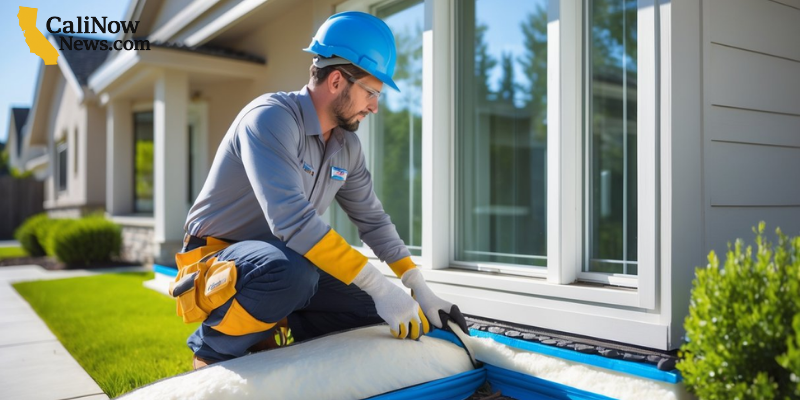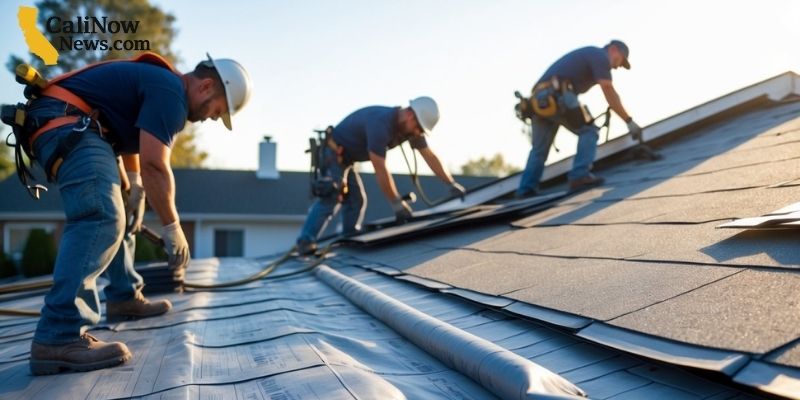Glendale residents now have access to a new option for improving home comfort and energy efficiency with Air Tight Insulation. This company focuses on providing insulation that helps keep indoor temperatures steady while reducing energy costs.
Air Tight Insulation offers high-quality services designed to seal homes effectively, preventing heat loss in winter and heat gain in summer. Their solutions are tailored to meet local climate needs, making homes more comfortable year-round.
Choosing the right insulation can be confusing, but Air Tight Insulation simplifies the process by assessing current home conditions and recommending the best materials and methods. This makes upgrading insulation easier and more reliable for homeowners in Glendale.
Glendale’s New Insulation Choice Explained

Glendale’s new insulation option focuses on materials that offer strong air sealing and high thermal resistance. It uses advanced types of insulation to improve home energy efficiency and comfort. The choice includes options suitable for attics and other key areas of the house.
Key Benefits for Glendale Homeowners
This insulation helps reduce heating and cooling costs by limiting air leaks and heat transfer. It keeps homes cooler in summer and warmer in winter, which is important due to Glendale’s climate. Homeowners notice lower energy bills and improved comfort throughout the year.
The material also adds moisture resistance, reducing the risk of mold and damage. It is designed to last longer than older insulation types, requiring less maintenance. Plus, many options are eco-friendly, made with safer, low-VOC materials that improve indoor air quality.
Types of Insulation Materials Used
The new system often combines spray polyurethane foam, polyisocyanurate boards, and fiberglass for different home areas. Spray foam is popular for its airtight seal and high R-value per inch. Polyisocyanurate panels provide strong thermal insulation for walls and roofs.
Fiberglass and rock wool are sometimes used in attics or crawlspaces, offering good insulation at a lower cost. Expanded polystyrene (EPS) and extruded polystyrene (XPS) beadboard are chosen for their moisture resistance, especially in basements. Each material is selected based on where it will perform best.
How Air Tight Insulation Improves Energy Efficiency
Air Tight Insulation focuses on sealing gaps where air leaks most often occur. This stops outside air from entering and inside air from escaping. By isolating the home, it reduces the workload on heating and cooling systems.
Good insulation thickness and proper installation are key. The system ensures the right R-value is achieved for Glendale’s climate, matching building codes and energy standards. This method helps homes maintain steady temperatures without wasting energy, leading to long-term savings on utility bills.
Technical Considerations and Installation Insights

Choosing the right insulation involves understanding how it affects heat flow, moisture, air movement, and sound control. Proper installation ensures the system works efficiently with heating and cooling setups while meeting local rules.
Thermal Performance and R-Value
R-value measures how well insulation resists heat flow. Higher R-values mean better resistance to heat moving by conduction and convection. For walls, R-values typically range from R-15 in 2×4 framing to R-21 in 2×6 framing. Adding continuous exterior insulation improves performance by reducing thermal bridging through studs.
Proper installation ensures the insulation fills all cavities without gaps. Even small gaps can reduce the overall R-value by allowing heat to pass through. Engineers often recommend factoring in air sealing with insulation to maximize thermal efficiency.
HVAC Integration and Air Distribution
Insulation must work with the home’s duct system to maintain even airflow. Poor insulation near return ducts and air ducts can cause energy loss and uneven temperatures. Sealing ducts helps prevent conditioned air from escaping.
Air tight insulation supports HVAC by limiting unwanted air exchange. This means the heating and cooling system can work more efficiently, reducing energy use. Proper installation around ductwork also avoids pressure imbalances that disrupt airflow.
Moisture Control and Building Codes
Controlling moisture is critical to prevent mold and damage. Insulation materials must allow vapor to pass or include a vapor barrier based on climate. Proper air sealing also stops moist air from moving into walls or ceilings where it can condense.
Building codes require insulation to meet certain standards for thermal resistance and moisture management. Installation must follow local rules for fire safety, insulation thickness, and placement. Inspectors often focus on ensuring these codes are met to protect the building’s structure.
Acoustic Insulation and Comfort
Insulation also reduces noise by absorbing sound waves. Dense materials like cellulose or fibrous insulation limit sound travel between rooms. This is important for comfort in multi-family homes or near busy streets.
Acoustic performance depends on how well the insulation fills cavities and seals gaps. Proper air sealing complements soundproofing by preventing noise leaks through cracks. Including insulation designed for both thermal and acoustic control improves overall living comfort.
- Air Tight Insulation of Glendale
- 1415 Gardena Ave, Glendale, CA 91204, United States
- +18188732738
- http://airtightinsulationca.com/glendale-ca
Frequently Asked Questions
This section covers important details about air tight insulation. It explains how it benefits buildings, compares to other insulation types, and what materials are used. It also looks at rules in Glendale and when to check insulation for best performance.
What are the benefits of air tight insulation in a building?
Air tight insulation reduces air leaks, which helps control indoor temperature. It lowers energy costs by keeping warm or cool air inside. It also improves comfort by reducing drafts and moisture issues.
How does air tight insulation compare to traditional insulation methods?
Air tight insulation seals gaps better than traditional insulation like fiberglass batts. Traditional methods mainly slow heat flow, while air tight insulation stops unwanted air movement. This leads to better energy savings and indoor air quality.
Can air tight insulation improve energy efficiency in residential homes?
Yes, it helps houses use less energy for heating and cooling. By reducing air leaks, homes stay warmer in winter and cooler in summer. This makes HVAC systems work less, saving money and energy.
What materials are commonly used for air tight insulation installations?
Spray foam and blown-in cellulose are common materials. Spray foam expands to fill cracks, creating a strong air barrier. Blown-in cellulose also fills gaps well and provides good insulation.
Are there specific building codes regarding air tight insulation in Glendale?
Glendale follows statewide California energy codes that require certain air sealing standards. Builders and contractors must meet these rules to improve energy efficiency and reduce air leaks in new and renovated homes.
How often should air tight insulation be checked for efficiency and integrity?
Insulation should be inspected every few years or after major repairs or weather events. Regular checks help identify settling, damage, or gaps that reduce effectiveness. Proper maintenance keeps energy savings consistent.




